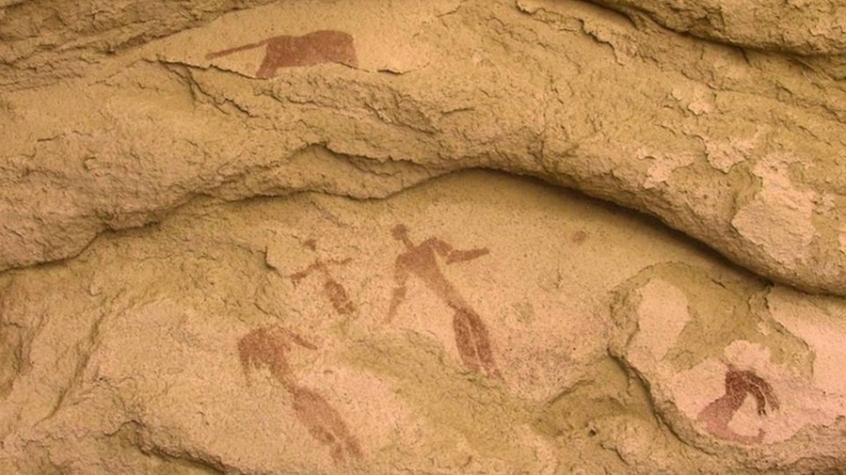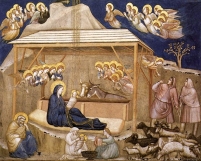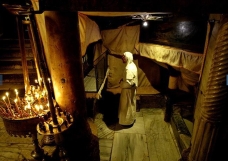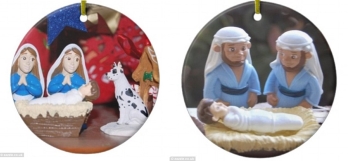
In a puzzling discovery, Italian researchers have discovered a nativity scene that was done, based on scientific calculation, 5,000 years ago—about 3,000 years before Jesus was born!
The drawing of the scene, done in reddish-brown ochre, was found on the ceiling of a small cave in the Egyptian Sahara desert during an expedition to sites between the Nile valley and the Gilf Kebir Plateau way back in 2005, geologist Marco Morelli, director of the Museum of Planetary Sciences in Prato, near Florence, Italy, told Seeker.
The researchers called the site the "Cave of the Parents."
Morelli said it is only now that his team has decided to reveal their amazing find. "It's a very evocative scene which indeed resembles the Christmas nativity. But it predates it by some 3,000 years"—the oldest nativity scene ever found, Morelli said.
The drawing depicts a star in the east, a baby between a man and a woman (presumably the newborn's parents), and two animals. The woman in the drawing has a missing head because of a painting detachment.
"The discovery has several implications as it raises new questions on the iconography of one of the more powerful Christian symbols," Morelli said.
The geologist explained other details of the finding, which make it unique. He noted that the newborn is drawn high above the ground, as if being raised to the sky. Such position would have meant a birth or a pregnancy, he said.
"As death was associated to Earth in contemporary rock art from the same area, it is likely that birth was linked to the sky," Morelli said.
The drawing becomes more symbolically complex with the inclusion of other figures—two animals and a small circular feature.
On the upper part is a drawing of a headless lion, a mythical beast which appears in several rock art drawings from the same area. Below the scene is a drawing of a baboon, while in the east, the artist appeared to have drawn a star.
"No doubt it's an intriguing drawing," Morelli said. "We didn't find similar scenes until the early Christian age."


















